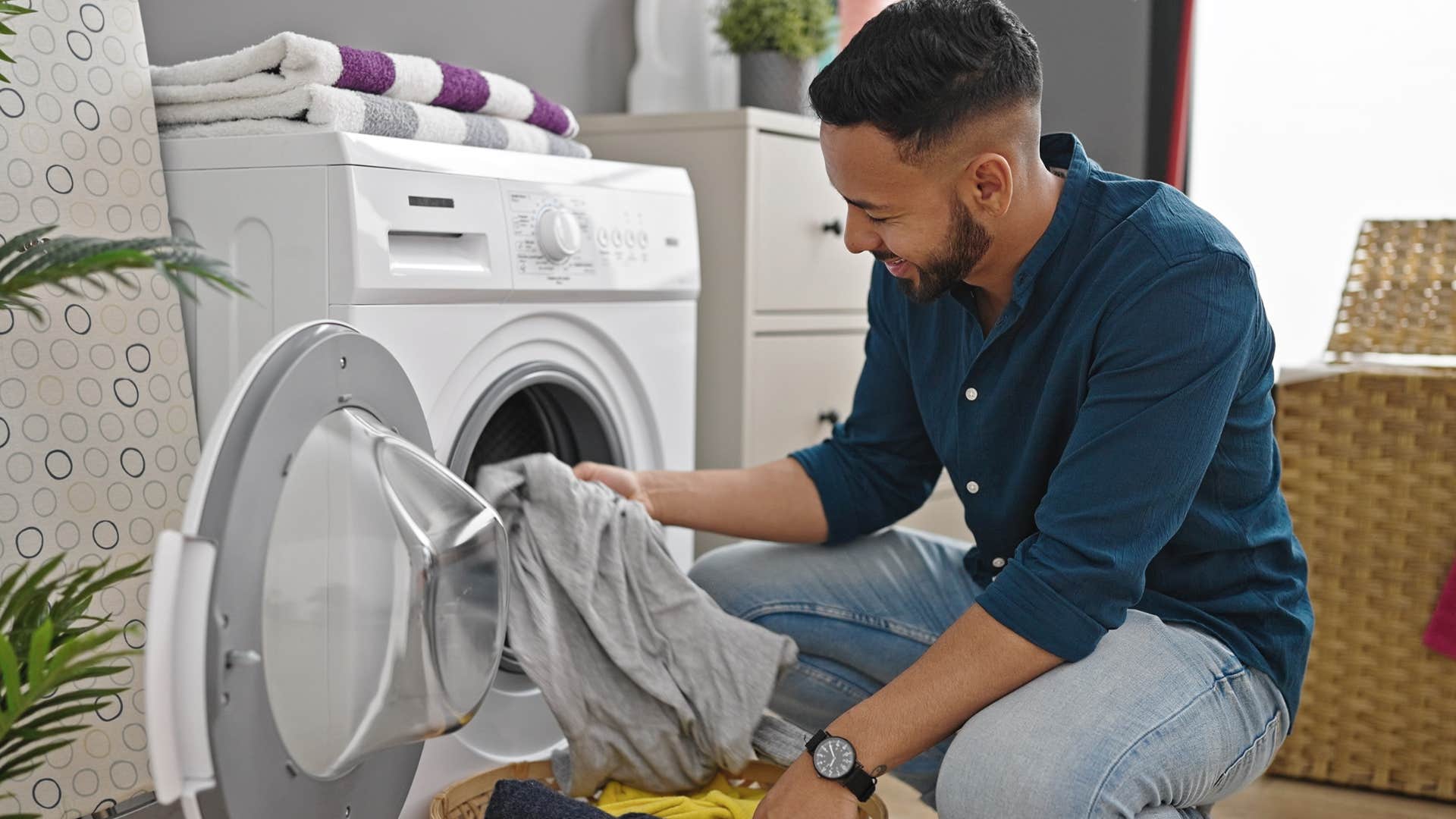People Who Secretly Struggle Financially Usually Have These 11 Things Missing From Their Homes
The homes of people who are struggling financially often reflect their challenging frame of mind.
 VH-studio / Shutterstock
VH-studio / Shutterstock Considering financial struggles and concerns have the power to affect a person’s psychological well-being and mental health, it’s not surprising that they also play a role in the more seemingly mundane aspects of life, from daily rituals to home decor, relationships, and personal self-care. Not only does money and income itself play a role in a person’s spending and lifestyle, their daily habits and mindset also play a role in their financial wellbeing in similar ways.
People who secretly struggle financially usually have these things missing from their homes. Their lifestyles and habits are influenced by the space they return home to every day. From budgeting tools to groceries and even furnishings, many of the things that are missing from their living spaces and everyday lives play a role in their lack of security and stability.
People who secretly struggle financially usually have these 11 things missing from their homes
1. A stocked pantry
 VH-Studio | Shutterstock.com
VH-Studio | Shutterstock.com
Food security is inherently linked with income. People living in low-income situations and struggling with money are most likely to experience food insecurity. Not only are they less likely to have a stocked pantry full of options, but they also don’t have access to nutritious foods that fuel healthy lifestyles for all members of the household.
That’s part of the reason why income is also linked to life expectancy and general health, as a 2016 study explains. The people who can afford things like preventative healthcare, fitness, and healthy habits, both from a time and money perspective, also tend to have stocked pantries and nutritious food options missing from their homes.
2. Brand-name options
 Josep Suria | Shutterstock.com
Josep Suria | Shutterstock.com
Whether it’s groceries, medications, or cleaning supplies, people who secretly struggle financially usually have brand-name options missing from their homes. Considering they’re consistently more expensive than name-brand and generic alternatives, buying the low-cost option is not only more accessible for these struggling individuals, but it’s their only choice.
Of course, especially in the healthcare industry, just because there are generic alternatives and low-cost options presented doesn’t mean they’re actually accessible for people struggling with finances. So, most of the time, when it comes to medicine and medications, people who secretly struggle with money simply lack the support, care, and resources they need entirely.
3. Working appliances
 Krakenimages.com | Shutterstock.com
Krakenimages.com | Shutterstock.com
According to a report from the Joint Center for Housing Studies, low-income households are generally the most burdened by household repair, maintenance, and improvement costs, with limited time and resources to spend keeping up with them all. Whether it’s broken appliances, furnishings, or even issues with electricity, water, or heating, they either have to spend time learning how to fix things themselves or hold off on hiring someone.
While many are required to push off desired home improvements that their wealthier counterparts indulge without a second thought, the actual burden from repairs and maintenance on low-income households comes from unexpected repairs that are impossible to push off, like plumbing issues or heating and cooling issues in extreme weather conditions.
People who secretly struggle financially often lack basic repairs in their homes. However, when it comes to essentials, they tend to take on debt and face further uncertainty in repairing them.
4. Overflowing toiletries and self-care items
 PeopleImages.com - Yuri A | Shutterstock.com
PeopleImages.com - Yuri A | Shutterstock.com
Overflowing toiletries, skincare, makeup products, and self-care items are just some of the things generally missing from the homes of people secretly struggling with money. Even if they need certain products or feel pressured to invest in them, they don’t have the disposable income to buy anything more than they need.
Especially with the societal pressure of guilt and shame many low-income households face, buying anything less than they need isn’t just required for their financial security. In many cases, it feels like a justification for narratives that punish them for their poverty.
Whether it’s brand-name skincare, a treat from the corner store for their kids, or having a TV at home, people secretly struggling with money are punished and told they’re “deserving” of financial struggle for doing anything more than surviving.
5. Brand new clothes and shoes
 alvarog1970 | Shutterstock.com
alvarog1970 | Shutterstock.com
Many low-income households are forced to rely on secondhand stores and thrift shops to obtain or replace their clothing. Whether it’s weather-appropriate clothing for the changing seasons, school options for their kids, or simply replacements for worn clothing and shoes, they hardly ever purchase things brand-new to save money.
People who secretly struggle financially usually have these things missing from their homes, because they’re already living paycheck-to-paycheck, simply surviving. Despite popular belief about the “deservingness” of poverty, almost half of low-income families report they can’t even afford all of their basic necessities and bills every month. So they don’t have the money to buy new clothes or spend on things they don’t need.
Especially today, when thrift resellers and wealthier individuals are scouring thrift stores and secondhand outlets, not out of necessity, but as a hobby, it’s even harder for the people who truly need accessibility and cost-effective options to get the things they need.
6. Specific cleaning supplies
 Drazen Zigic | Shutterstock.com
Drazen Zigic | Shutterstock.com
Similar to basic hygiene and health, cleanliness is associated with income. People living in low-income situations or experiencing homelessness don’t have the same access to information, knowledge, money, and time to invest in things like cleaning products.
People who secretly struggle financially often lack essential cleaning products in their homes, such as those for specific situations or basic hygiene items like hand soap, shampoo, and conditioner. They typically bulk purchase multipurpose cleaning products or vinegar, even if that means other areas of their home and hygiene go untouched.
7. A home office
 Zamrznuti tonovi | Shutterstock.com
Zamrznuti tonovi | Shutterstock.com
Even if they do work from home, which is relatively uncommon, considering healthy people are the most likely to have remote work schedules, many people who secretly struggle financially usually have a few key things missing from their homes that make life much harder.
From a private, quiet space at home to a home office or desk and even internet connectivity, people in low-income situations face several challenges when it comes to working from home, many of which make it impossible for them to reap the benefits of remote work.
8. Holiday decorations
 Yuganov Konstantin | Shutterstock.com
Yuganov Konstantin | Shutterstock.com
People who secretly struggle financially usually have holiday decorations missing from their homes. It’s often a matter of disposable income. They struggle to afford gifts for their loved ones, let alone non-essential items like a Christmas tree or holiday decorations.
Of course, especially amid the inherently emotional and stressful nature of the holiday season, this financial struggle with decorations and gifts can lead low-income people to feelings of shame, guilt, and inadequacy.
Especially for parents who struggle to afford things for their children around this time of year and face the wrath of comparison from other families and classmates, it’s more than simply a financial struggle. It’s also personal, social, and emotional.
9. Emergency supplies
 Lordn | Shutterstock.com
Lordn | Shutterstock.com
Whether it’s extra cash and savings for unexpected expenses, materials for natural disasters, or extra food, people who secretly struggle financially usually have these emergency supplies missing from their homes. They can hardly afford to live in the present moment, which is why planning for the future or emergencies is almost always out of the question.
According to a study on emergency preparedness, low-income people consistently spend more on unexpected costs and emergencies compared to wealthier people. However, they also tend to underestimate the burden of loans and debt, leading to long-term consequences for trying to survive amid chaos.
10. Quietness
 insta_photos | Shutterstock.com
insta_photos | Shutterstock.com
A 2017 study on noise pollution argues that low-income neighborhoods and households are disproportionately burdened with its consequences in their daily lives compared to the average person.
Whether it’s city noise that sabotages their sleep quality, co-living situations like apartment complexes, or simply noise from their children at home during the day without childcare support, they tend to lack the kind of quietness and security others boast without a second thought.
11. Reliable transportation
 PeopleImages.com - Yuri A | Shutterstock.com
PeopleImages.com - Yuri A | Shutterstock.com
According to data from the CDC, the percentage of adults with reliable transportation in our country decreases alongside income. The more money someone has, the more likely they are to be able to travel, whether that’s across the world or 15 minutes to work every morning.
Of course, this generally presents some nuanced challenges for low-income people, including safety dilemmas with public transportation, career convenience and accessibility, and childcare issues related to bringing kids to school. Our ability to move from one place to another is inherently defined by our income, even though the people who need access the most are also the most financially insecure.
Even if they do have access to a car of their own or within their family, oftentimes the financial burdens of owning a car are completely unaffordable, whether it’s keeping up with repairs, general maintenance like oil changes, or getting gas.
Zayda Slabbekoorn is a staff writer with a bachelor’s degree in social relations & policy and gender studies who focuses on psychology, relationships, self-help, and human interest stories.

